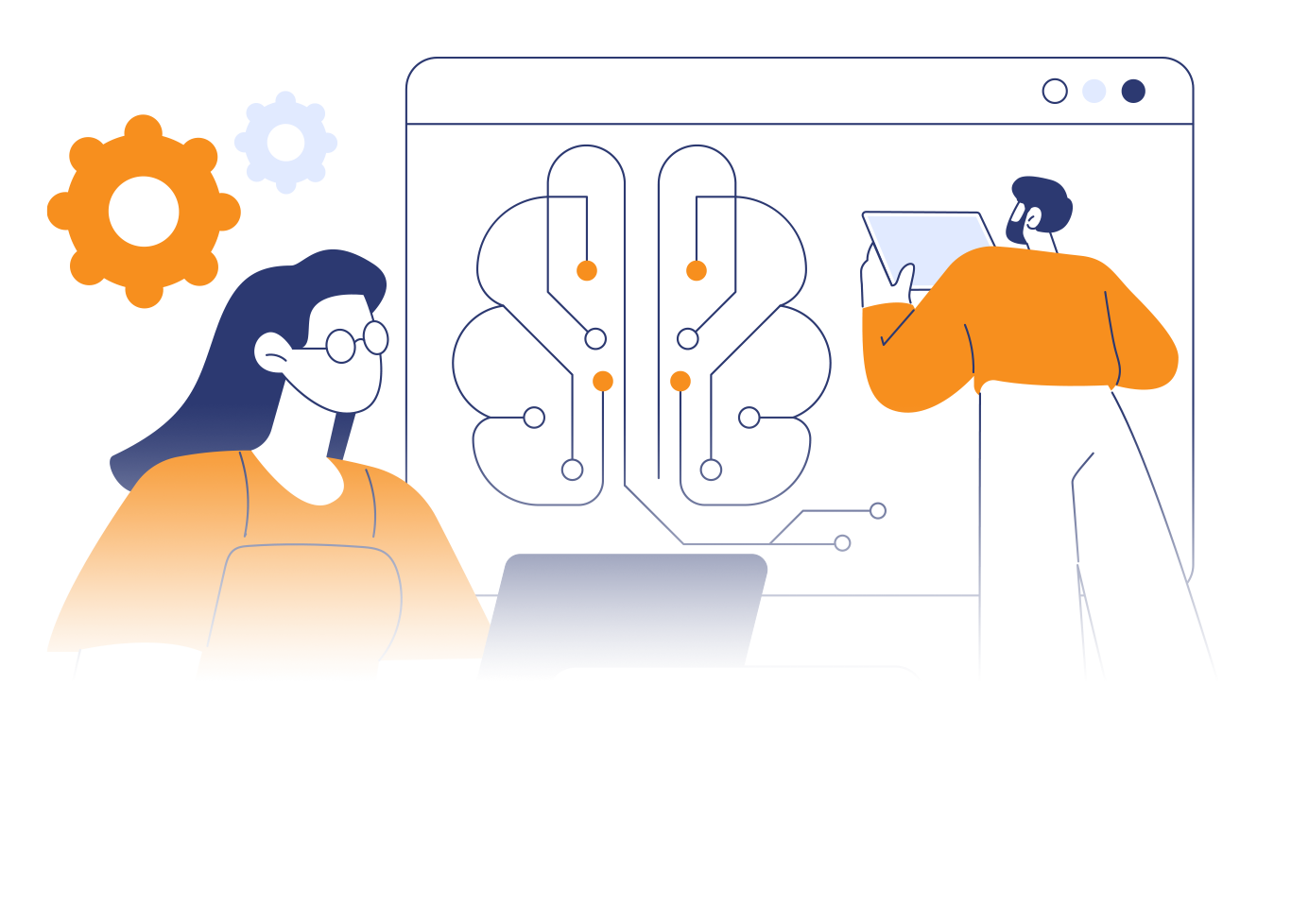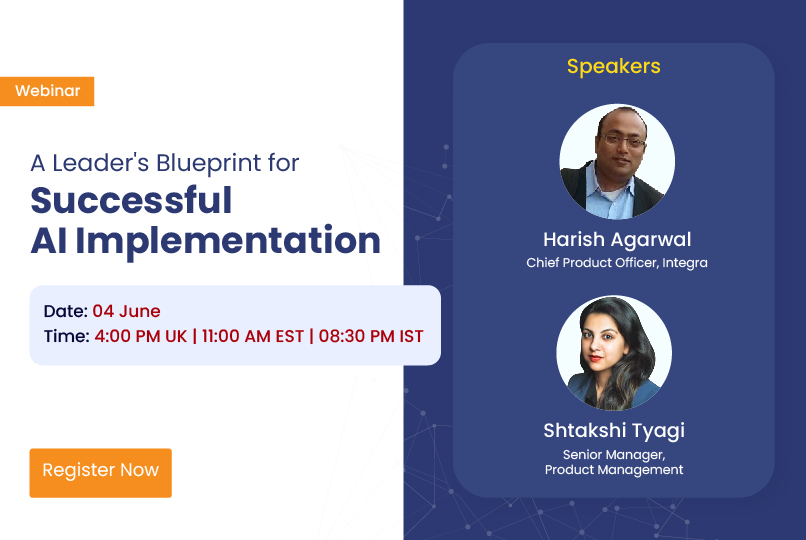Month: May 2024
Transform Your AI Strategy: Gain an Edge with Domain-Specific LLMs
As artificial intelligence advances, large language models (LLMs) are central to many generative AI applications. Beyond their general capabilities, domain-specific LLMs are now making waves by being finely tuned to understand and generate text within specialized fields or industries. This evolution creates significant opportunities for innovation and efficiency in targeted areas.
Large Language Models (LLMs)
Large Language Models (LLMs) have significantly evolved since their inception. Initially, they were simple rule-based systems. Now, they are advanced neural networks capable of processing vast amounts of data and learning complex language patterns.
This evolution marks a shift from general-purpose models, which handle a broad range of topics, to specialized models that provide nuanced understanding and generation capabilities within specific domains.
| Generation | Language Model Characteristics | Capabilities |
| 1st Generation | Rule-based systems | Basic syntax and grammar processing |
| 2nd Generation | Machine learning models | Contextual understanding, topic recognition |
| 3rd Generation | Neural network models | Deep learning, semantic analysis, language generation |
| 4th Generation (Current) | Domain-specific LLMs | Advanced specialization, industry-specific tasks |
As these models have become more complex, their value to specific sectors has increased.
Domain-Specific Large Language Models
The shift toward domain-specific LLMs is driven by the need for precision and relevance in AI applications. Businesses across various sectors require tools that understand the intricacies of their industry’s language and offer actionable insights and solutions designed to address their unique challenges.
Domain-specific LLMs are fine-tuned on industry-relevant data, enabling them to perform tasks with greater accuracy and contextual awareness. Whether it’s legal jargon, medical terminologies, financial reports or a specialized scientific research report, these models manage the specialized language of each domain effectively.
The importance of these models is further underscored by their potential to transform operations, enhance decision-making processes, and personalize customer interactions. Adopting these models can provide companies with a significant competitive advantage, as they are more efficient and capable of driving innovation in AI adoption.
Applications of Domain-Specific LLMs
Development Impact
- Domain-specific LLMs have significantly changed various industries by tailoring AI to understand and process industry-specific language and concepts.
- These sophisticated tools:
- Enhance natural language understanding
- Refine tasks within specific domains
- Personalize user experiences
Enhancing Natural Language Understanding
- Domain-specific LLMs grasp the nuances of industry-specific jargon, idioms, and expressions.
- This heightened comprehension:
- Improves model accuracy in interpreting and analyzing text
- Is highly useful for tasks such as sentiment analysis in customer feedback or legal document review
- Training on specialized datasets makes these models more attuned to the context and semantics of domain language, leading to more reliable and actionable insights.
Improving Domain-Specific Tasks
- Domain-specific LLMs offer tailored solutions to address unique challenges in each sector.
- Examples include:
- Healthcare: Deciphering medical notes and literature to assist in diagnosis and treatment plans
- Finance: Interpreting market reports and assisting in risk assessment
- These applications streamline workflows and improve the overall quality and reliability of tasks.
Personalizing User Experiences
- Domain-specific LLMs enable highly personalized user experiences by understanding individual preferences and behaviors within a specific context.
- Examples include:
- E-commerce: Offering personalized shopping suggestions based on browsing history and purchase records
- Educational Technology: Adapting learning materials to the student’s proficiency level and interests
- The personalization capabilities lead to increased user engagement and satisfaction, as individuals feel understood and catered to on a more granular level.
Benefits of Implementing Domain-Specific LLMs
Implementing domain-specific LLMs offers numerous advantages to businesses seeking to utilize the power of AI. From enhancing operational efficiency to gaining a competitive advantage, these applications can change organizational operations.
Increased Efficiency and Accuracy
Domain-specific LLMs are tailored to understand and generate text highly relevant to a specific field. This specialization leads to a significant improvement in task efficiency and accuracy. For instance, LLMs trained in medical terminology can help healthcare providers quickly interpret patient data, leading to faster and more accurate diagnoses.
By utilizing domain-specific language models, organizations can automate routine tasks, freeing up valuable time for professionals to focus on complex decision-making processes.
Cost-Effective Solutions
Adopting domain-specific LLMs can be a cost-effective alternative to traditional methods that require extensive human labor. Automating domain-specific tasks reduces the need for large teams to manage data-intensive processes, cutting down operational costs.
Additionally, the scalability of LLMs allows organizations to handle increased workloads without a proportional rise in expenses. The initial investment in training domain-specific LLMs pays off in the long term as these models continue to learn and improve, further reducing future training and maintenance costs.
Competitive Edge in AI Adoption
Incorporating domain-specific LLMs into business operations allows companies to stay ahead in AI adoption. Organizations leveraging these models can offer more sophisticated services designed for their industry’s nuances, setting them apart from competitors.
| Benefit | Impact |
| Customized AI Services | High |
| Speed of Service Delivery | Medium |
| Quality of User Experience | High |
Considerations for Utilizing Domain-Specific LLMs
When integrating domain-specific LLMs into business practices, leaders must carefully consider several factors to ensure successful, secure, and ethical deployment. Below, we discuss the primary considerations that VPs and CxOs should contemplate when utilizing domain-specific LLMs.
Data Privacy and Security
Deploying domain-specific LLMs requires access to large volumes of data, some of which may be sensitive or confidential. Ensuring data privacy and security is paramount. Businesses must adhere to data protection regulations and implement robust cybersecurity measures to prevent unauthorized access and data breaches.
| Consideration | Action Required |
| Regulatory Compliance | Adherence to GDPR, HIPAA, or other relevant frameworks |
| Data Encryption | Use of advanced encryption standards for data at rest and in transit |
| Access Controls | Strict user authentication and authorization protocols |
| Regular Audits | Ongoing assessments of data security practices |
Ethical Use of AI
The ethical implications of AI, particularly in domain-specific applications, are a significant concern. Businesses must ensure their use of LLMs does not perpetuate biases or discrimination and that the AI’s decision-making processes are transparent and accountable.
| Ethical Aspect | Action Required |
| Bias Mitigation | Regular reviews and adjustments to training datasets |
| Transparency | Clear documentation of AI decision-making processes |
| Accountability | Establishment of protocols for human oversight of AI actions |
Integration with Existing Systems
For domain-specific LLMs to function seamlessly within an organization, they must be effectively integrated with existing systems and workflows. This can present technical challenges and may require significant investment in infrastructure and training.
| Integration Challenge | Potential Solution |
| Compatibility | Ensuring the LLM can interface with current software and databases |
| Scalability | Planning for increased computational and storage needs as the AI scales |
| Employee Training | Providing comprehensive training for staff to utilize the AI effectively |
By considering these factors, businesses can better prepare for the successful implementation of domain-specific LLMs. Recognizing the benefits of domain-specific LLMs while addressing potential challenges is crucial for getting ahead in AI adoption and ensuring responsible and secure use of these powerful technologies.


